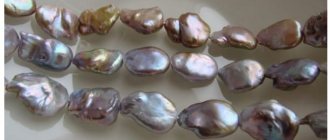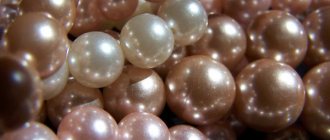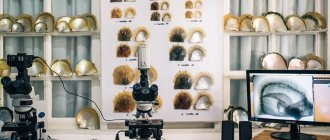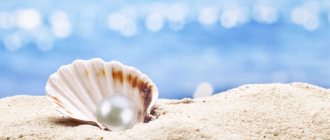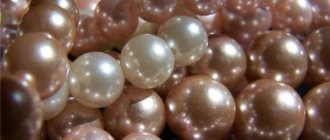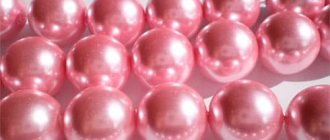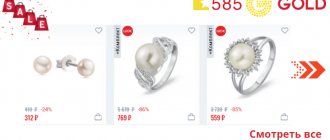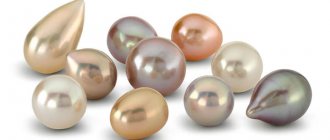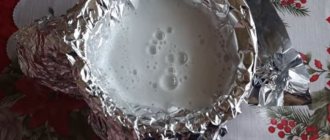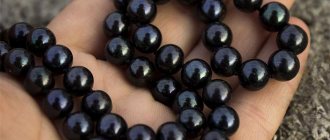Baroque pearls, also known as baroque pearls, are a type of ordinary river or sea pearls, characterized by non-ideal pearl shapes. Strictly speaking, the term “Baroque” itself, which comes from the Italian language, means “raw, irregularly shaped, angular, non-standard.”
Baroque pearls
The Baroque style, which came into fashion in the 19th century, includes various objects of art, from architecture to interior decoration elements, and natural pearls of non-standard shapes.
Baroque pearls - beautiful varieties
Baroque pearls are formed in the mantle cavity of bivalves. During water filtration, small solid particles - grains of sand, parasites, debris, any organic or inorganic compounds - enter the sink cavity. They do not come out, but begin to grow layer by layer with aragonite plates, which are held together by conchiolin. Baroque pearls get their shape due to uneven sediment on the surface of the core. The growth of the nacre layer is from 3 to 4 mm per year, so a full-fledged specimen is obtained in 10-12 years.
Baroque pearls are undeservedly called “defects”. Unlike classic pearls, which are carefully selected for jewelry, each gem is unique in its own way: shade, shape, size - no two pearls are identical. The more valuable sets, paired jewelry and sets of baroque pearls are.
One of the most popular baroque pearls weighs 90 grams. The color of the “Hope Pearl” on the surface changes from milky white to golden with greenish highlights. The length of the specimen is 15 cm, in diameter – from 8.3 to 11.4 cm.
What are pearls?
Pearls are a semi-organic, semi-mineral natural formation that is obtained from the shells of certain mollusks. It is formed in the shell and consists of a core - a fragment of a mollusk shell, a grain of sand, or another foreign object, covered with layers of mother-of-pearl.
Mother of pearl, in turn, is a complex composite, a layered substance consisting of the mineral aragonite (calcium carbonate) and conchiolin, a hard organic substance similar to what animal horns are made of.
Remarkable is the fact that a pearl can have several dozen alternating layers of aragonite and conchiolin, which do not touch each other.
As a result of enveloping a foreign body with nacre, a pearl is obtained. There are also types of non-nucleated pearls. They are formed due to the fact that the mollusk wraps its pearl shell around an accumulation of its own epithelial cells that have been torn away from it as a result of external traumatic influence.
The color of this mineral is most often whitish-beige, whitish-cream, whitish-gray with characteristic iridescence, forming a unique play and shine inherent only to mother-of-pearl. But there are yellow, orange, moiré-gray, black and even purple pearls. Most of them are cultivated, but some varieties cannot be cultivated and are only wild.
Geography of the gem
Baroque pearls of marine origin are mined in the Persian Gulf, Red, Mediterranean and Adriatic seas. Freshwater pearls can be found in rivers in Russia, China, Germany and North America.
“Head of Allah” is another example of an exclusive baroque pearl. The weight of the pearl, which looks like a head in a turban, is 6,720 grams, its diameter is 24 cm. According to legend, the pearl is of artificial origin. The philosopher Lao Tzu placed three bas-reliefs inside oysters. From generation to generation, Lao Tzu's descendants transplanted the growing pearls into larger oysters. One day, during a storm, one of the oysters was lost. It is believed that the “Head of Allah” discovered in the Philippines is the lost pearl of Lao Tzu. According to experts, the copy costs at least $40 million.
Baroque pearls - natural or artificial
All pearls are conventionally divided into natural (natural, or wild - other names) and cultured. By origin – sea or river. At the same time, cultured pearls cannot be called a fake - unlike their plastic painted imitations, cultured pearls are produced from shellfish shells on sea farms in conditions as close as possible to the natural habitat.
Thus, the natural technology of pearl growth is not disrupted. The main difference from wild pearls is the ability to adjust the shape, color, quantity and ripening period of pearls. Sea cultured pearls grow faster, freshwater river pearls are smaller, but the number of pearls in a shell can reach 100 pieces. Japan is a leader in the cultivation of exclusive pearls.
Among baroque pearls, “La Peregrina” is considered one of the most expensive specimens. The pear-shaped pearl weighs 6.5 g and has a diameter of 23.8 cm. The copy is valued at $10 million. The milky-white “Wandering Pearl” is included in the Guinness Book of Records and has been an adornment of the collections of the ruling Houses of Europe for many years.
Jewelry with baroque pearls and how to care for them
Baroque pearls are a fragile and delicate mineral, so you must carefully follow the rules for storing and caring for the product.
Jewelry should not be exposed to caustic chemical compounds. It is important to avoid contact with acids, alcohols, and oils. If necessary, wash pearls in a weak soap solution. After cleansing, the minerals are wiped with a dry soft cloth. Learn more about cleaning pearl jewelry here.
It is better to store the product in a separate box or soft bag. This will help avoid chips and cracks.
Unlike classic spherical pearls, baroque pearls are suitable for daily wear. Neat earrings or a ring will look appropriate in any look.
You should be more careful with necklaces, pendants, and bracelets. Such jewelry will look better with a formal or classic outfit. The main thing is not to overdo it with accessories. An abundance of jewelry will look cheap and tasteless.
Volumetric items are suitable for evening outings. When selecting accessories, it is necessary to take into account color combinations. Light stones will complement dark outfits and sets in pastel colors. Dark pearls will look good with white or cream colored clothing.
Also, products can be combined with other stones (diamonds, topaz, rubies).
Read more about what and how to wear pearls in the article.
View this post on Instagram
Publication from ACCESSORIES Lux⭐️BEADS⭐️BEADS (@magnoliabijou_com) Jun 2, 2022 at 10:11 PDT
In the video there is an elegant decoration with a stone:
Cultured pearls
the cultivation of pearls - the extraction of natural gems is prohibited at the legislative level. The coasts of Japan and China are almost entirely occupied by sea farms, where baroque pearls of variable (arbitrary) or specific, specified shapes are grown.
Bivalve marine mollusks - oysters, mussels, scallops are placed in a nutrient substrate. One in ten oysters contains a baroque pearl. The ripening period ranges from seven to ten years. To obtain pearls of a certain shape, a base of a given shape is placed in mollusk shells. In China, pearls are sectioned in this way in the form of an image of Buddha.
Are pearls counterfeited?
There are fakes, but mainly in the segment of large spherical pearls. Baroque mother-of-pearl, due to its specific shape, especially “grain” pearls in the form of animal figures, is too difficult to imitate, and since its price is not too high, it is not economically profitable. But in some cases, such beads are recreated from several pieces of cheaper mother-of-pearl glued together. Take a closer look: the seams are noticeable, but they can be hidden, for example, in the frame.
Baroque pearl bracelet
Sometimes baroque mother-of-pearl is imitated by applying a substance obtained from fish scales to a glass base. Such quasi-pearls have a gray color and lack the characteristic iridescent tints that distinguish a natural organic-mineral jewel.
Artificial pearls
Imitation pearls were first invented in Medieval India. Instead of the costly extraction of wild pearls, they began to make smooth clay balls. After firing, the products were covered in several layers with a solution of mother-of-pearl from the inside of mollusk shells, obtaining artificial pearls of the same shape and size.
In the USA, the technology has been brought to perfection: today 80% of the pearl jewelry market is made up of artificial stones from America. The pearl is based on a piece of oyster shell. A mineral-organic solution with mother-of-pearl gobber pigment is sprayed onto its surface layer by layer. The chemical composition of the mineral does not change, but the density of the imitation is higher, the surface has no natural defects, and the shape can be specified by the manufacturer. And the cost of such mass-produced products is significantly lower than that of wild or cultured pearls.
How to spot a fake
Despite the relatively low cost of baroque pearls, fakes can often be found on the jewelry market.
You can distinguish natural stone from costume jewelry by the following characteristics:
- On non-original stones, the glue line is visible. This imitates the irregular shape of the beads.
- A dull shine and visible particles on the surface of the stone indicate artificial origin. This is revealed when the glass base is coated with fish scale paint.
- When two stones are gently rubbed against each other, a characteristic pearlescent powder is released.
- Under the influence of ultraviolet light, the baroque gem has a bluish glow. Counterfeits do not have this effect.
- If you place a bead in vinegar, it will instantly dissolve. The glass imitation will not change in any way. The test is reliable, but you risk losing the stone if it is original.
- Glass and plastic are sensitive to high temperatures. If you throw jewelry into a fire, it will instantly melt. A natural mineral may remain unchanged for several minutes.
Despite the relative simplicity of the tests, only a professional can determine a high-quality imitation.
See how to distinguish a real stone from a fake one:
Types and costs of baroque mother-of-pearl pearls
Baroque minerals are represented by a wide group of pearls with different properties, origins, shapes, colors and other distinctive features. Basically, the name of the group refers to the geographical origin of the specimens. Let's list the most common ones.
"Receipts"
Pearls of any origin, the appearance of which resembles the silhouettes of various animals, insects, birds, body parts, objects. Pearls are used as amulets and talismans, endowing them with healing and magical properties.
"Kasumi"
Freshwater lagoon lake Kasumigaura in Japan's Ibaraki prefecture in the Kanto region is the birthplace of kasumi pearls. Main characteristics:
- Color: from lilac to deep violet;
- Shape: ellipsoidal.
- Surface: corrugated, non-porous.
- Dimensions: up to 1.3 cm in diameter.
The “harvest” of natural freshwater kasumi pearls does not exceed 5 thousand copies per year. The cost of one unit can reach 200 US dollars. Cultivated imitation kasumi light from China or Australia has a lighter shade and shape.
"Mabe" / "Mabe"
"Mabe" is cultivated in seawater in the provinces of Japan and on the coast of Australia. Breeders implant a disk-, tablet-, heart-, oval-, or rectangle-shaped embryo between the mantle and shell of the Pinctada maxima or Pteria penguin oyster. During the growth process, the nucleus and shell merge, so a doublet pearl is obtained: the crown is made of natural mother-of-pearl, the pavilion is the embryo with part of the shell.
- Color: from light pink to deep pink with a blue metallic sheen.
- Shape: variable, convex.
- Surface: smooth.
- Dimensions: rarely from 1.4 cm, more often from 2 mm in diameter.
Unit prices start at $30.
"Keshi"
Translated into Russian, keshi means “grain”. Pearls in the form of small scales, similar to plant seeds, are obtained from fresh and sea shells; keshi are often accompanied by wild round pearls. A special feature of the cache is the absence of a kernel.
- Color: white to light silver.
- Shape: oblong, irregular.
- Surface: corrugated.
- Dimensions: 4-6 mm.
"Biwa"
The freshwater lake of the same name in Japan in Shiga Prefecture (the central part of the island of Honshu), northeast of Kyoto, is the birthplace of nuclear-free oval pearls.
- Color: Varies from milky white, cream and pink to greenish or blue.
- Shape: elongated, oval, pointed, needle-like.
- Surface: corrugated.
- Dimensions: up to 20 mm in diameter, up to 30 mm in length.
Biwa pearls are used to create exclusive, non-traditional jewelry - beads, necklaces, bracelets, asymmetrical sets.
"Souffle"
Soufflé cultured pearls have a porous core. Irregularly shaped pearls are lighter and more voluminous than their counterparts. They are used for non-standard, asymmetrical decorations. Often the pearl is sawed in half, the porous core is removed, and jewelry inserts or precious stones are placed in its place.
- Color: varies within the pearlescent range of shades.
- Shape: arbitrary, voluminous.
- Surface: corrugated, without pronounced defects.
- Sizes: any.
Depending on the origin, color and shape, the cost of jewelry with soufflé pearls can vary over a wide price range.
The most famous Baroque pearls
There are many stories around the world related to baroque pearls. The Hope Pearl is famous; it is one of the largest in the world, weighing approximately 90 g. The jewel shimmers in shades of white, golden and even greenish. The mineral is named after its owner Henry Hope, who lived in the 19th century.
Also no less famous is the pearl called “La Peregrina”, which means “incomparable”. It is pear-shaped and white in color. This jewel was given by a Spanish king to his wife, and he got it from an American sailor, who in turn received it from a slave in exchange for his freedom. Then in the 1960s. It was acquired by Elizabeth Taylor, who had it all her life, and then the jewel was sold at auction.
The most beautiful earrings with baroque pearls were worn by the Egyptian queen Cleopatra, who threw them into wine to prove her feelings for Mark Antony.
Baroque non-pearl pearls
Formally, non-pearl pearls do not belong directly to the Baroque group, but their shape, shine, and color range do not allow them to be separated into a separate category.
"Melo melo"
It is also called sun pearl, because the color shades contain a wide palette of colors from yellow to red.
- Color: shades of orange, yellow, red and brown.
- Shape: round.
- Surface: matte, with sun flares.
- Dimensions: up to 25 mm in diameter.
On the coast of the South Asian seas, the rare Melo-Melo snail lives, and, like mollusks, it produces beads from calcium deposits. Formally, these are not pearls, but in jewelry, melo melo is classified as a group of baroque pearls. Due to the special surface of melo melo, it is impossible to fake, and the cost of a copy for one carat starts from 6 thousand dollars.
One of the most famous specimens of Melo Melo, the size of a golf ball and weighing 397 carats, was sold for $500,000.
"Co Hog"
Baroque “non-pearls” are produced by shells of the same name, whose habitat is limited to the Atlantic coast of North America.
- Color: all shades from milky white to black.
- Shape: round.
- Surface: matte, with slight shine.
- Dimensions: up to 15 mm in diameter.
The most valuable and suitable for jewelry are considered to be perfectly round specimens of a lilac hue - the possibility of finding such a pearl is estimated as a chance of 1 in 100,000. The second most popular are pearls in the shape of a tear, drop, or button. The rest are practically meaningless.
"Conk"
The birthplace of this “non-pearl” is the coast of the countries and island states of the Caribbean. The mollusk of the same name dies when the pearl is removed, so it is impossible to cultivate the conch.
- Color: all shades of pink.
- Shape: round, oval.
- Surface: matte, with slight shine.
- Dimensions: up to 20 mm in diameter.
The most valuable and quite rare specimens are considered to be regularly round in shape, pink with shades of lilac.
Baroque pearls - healing properties
The healing properties of pearls include the ability to stabilize the central nervous system, calm nervous disorders, relieve stress, relieve insomnia and restore memory. Lithotherapists recommend placing pearl jewelry in a glass of clean cold water overnight. It is believed that pearl water drunk in the morning has:
- Anti-inflammatory;
- Antimicrobial;
- Hemostatic;
- It has a regenerative effect and effectively treats various diseases of the gastrointestinal tract, kidneys, and liver.
The magical properties of baroque pearls
Residents of the Celestial Empire endowed baroque pearls with magical powers, used accessories and amulets with them in fertility rituals, and considered them a symbol of youth and longevity. Mongolian, European and Arab rulers traditionally used pearls as a symbol of power. It was believed that pearls could recognize poisoners: for this, pearls were placed in drinking cups, and dishes inlaid with pearls were an indicator of poisons.
Regardless of religion or culture, pearls are considered a universal symbol of purity and purity. Therefore, it is an invariable attribute of the bride’s wedding dress: it is used to embroider corsets and skirts, and is used in jewelry and headdresses. Pearls are used in the vestments of clergy and inlaid with religious paraphernalia.
Magical and healing properties of Baroque Burmitz grain
It is believed that a mineral of natural origin of any form has healing and magical properties. Pearls can absorb negative energy, eliminate headaches, normalize the functioning of the digestive tract, stabilize hormonal levels and much more.
It is also believed that pearls are more suitable for jewelry intended for women; men rarely wear items with them. The mineral can provide its owner with protection from bad people and misfortunes. From time immemorial, a pearl has been considered an ideal decoration for a bride. Today, even very young girls wear bracelets, earrings, and beads made from such an unusual type of mineral.
The pearl represents a symbol of purity, wisdom and fidelity. From time immemorial, many people have believed in its miraculous rejuvenating power. In astrology, it is believed that the mineral interacts well with people born under the zodiac signs of the water element.
There is a belief that over time a pearl begins to become one with its owner, and if its owner is often angry, worried and nervous, then the mineral begins to lose its shine and deteriorate.
Who is suitable according to their zodiac sign?
“Tears of an angel” (one of the names of pearls) appeals to water signs of the zodiac. They are most suitable for Cancers - they restrain negative manifestations of character, protect against bad intentions, restrain grievances and promote self-affirmation in the personal and professional sphere. Cancers, Pisces and Aquarius can wear jewelry with baroque pearls of any shade.
Aries are not recommended to choose pearls of silver, gray or steel shades. Virgos need to avoid black pearls - they can enhance negative manifestations of character, melancholy and suspiciousness of representatives of this sign.
Leos and Geminis should stick to light and pastel colors of pearls.
For Scorpios and Capricorns, black, gray or mother-of-pearl baroque pearls are more suitable, preferably in combination with silver metals.
For Taurus, Libra and Sagittarius there are no contraindications for the color or combination of baroque pearls.
Combination with other stones and metals
Pearls can be combined with various stones and minerals. The main principle of combination is color harmony:
- For pearls of milky white, white and ivory, aquamarine, amethyst, diamond, garnet, heliotrope, emerald, quartz, opal, pink ruby, topaz, chrysoprase, cubic zirconia of any color are suitable. The combination of milky pearls with opaque minerals seems interesting: lapis lazuli, turquoise, coral, mother of pearl, heliotis.
- For pink pearls, lighter or more saturated in tone amethyst, morganite, rhodolite, and tourmaline are suitable.
- Gray and black pearls will successfully set off transparent crystal or diamond.
- Yellow, brown and orange shades will be decorated with citrine, golden topaz, rauch topaz (smoky quartz), yellow and cognac diamonds.
- Jewelry with rare types of pearls is worn with diamonds.
Pearls are set in gold, silver, platinum, palladium - depending on the shade of the pearl, the precious insert may look most advantageous in one setting or another. Headsets with silver frames and accessories without frames (bracelets, pearl beads) are more suitable as everyday jewelry. Gold is a universal option for evening wear.
Jewelry made from stacked pearls of variable shapes - beads, bracelets - will perfectly complement light summer outfits or cocktail dresses.
Baroque pearl price
Depending on the variety, size, color, shape and origin of the mineral, its cost also varies. Thus, wild sea baroque pearls with a diameter of 5 mm or more cost from $100 per unit. Its river counterpart of natural origin - from $50. Cultured pearls of similar sizes will cost about half as much. Only experts can estimate the value of unique specimens.
The cost of pearl jewelry on the Russian market starts from 5,000 rubles (for a set of earrings in silver). Accordingly, a necklace made of small (up to 8 mm in diameter) pearls is estimated at 10-12 thousand rubles. The indicated price is approximate, the exact cost depends on the complexity of the work.
Cultured and wild pearls
Cultivated does not mean artificial. The fact is that the predatory fishing of mollusks for the purpose of obtaining pearls for several centuries almost led to the extinction of pearl-bearing invertebrate species. To prevent this, in the 20s of the 20th century in Japan they developed and introduced a method of obtaining pearls on “pearl farms”, where they are grown inside mollusks under human control. After removing the future decoration from the mollusk, the living creature is released back into the water.
Earrings with natural baroque pearls
The cultivation technique allows you to control the growth and development of formations inside the mollusks, obtaining both large pearls of a regular round shape and, if necessary, various types of non-standard pearls. Some of them have the shape of ellipses, others - icicles or needles, and others may resemble a human face or an animal figurine.
Baroque pearls of the latter type are called “monster” or “paragon”.
Most pearl items in a modern jewelry store, including precious black pearls, are freshwater or saltwater cultured pearls.
In terms of value, perfectly spherical pearls cost the most, but recently “irregularity” has begun to come into fashion again, and the price of baroque pearls has begun to increase. Depending on the quality—size, surface cleanliness, shine, thickness of the mother-of-pearl layer, and so on—the price of a baroque pearl can reach $100–200.
